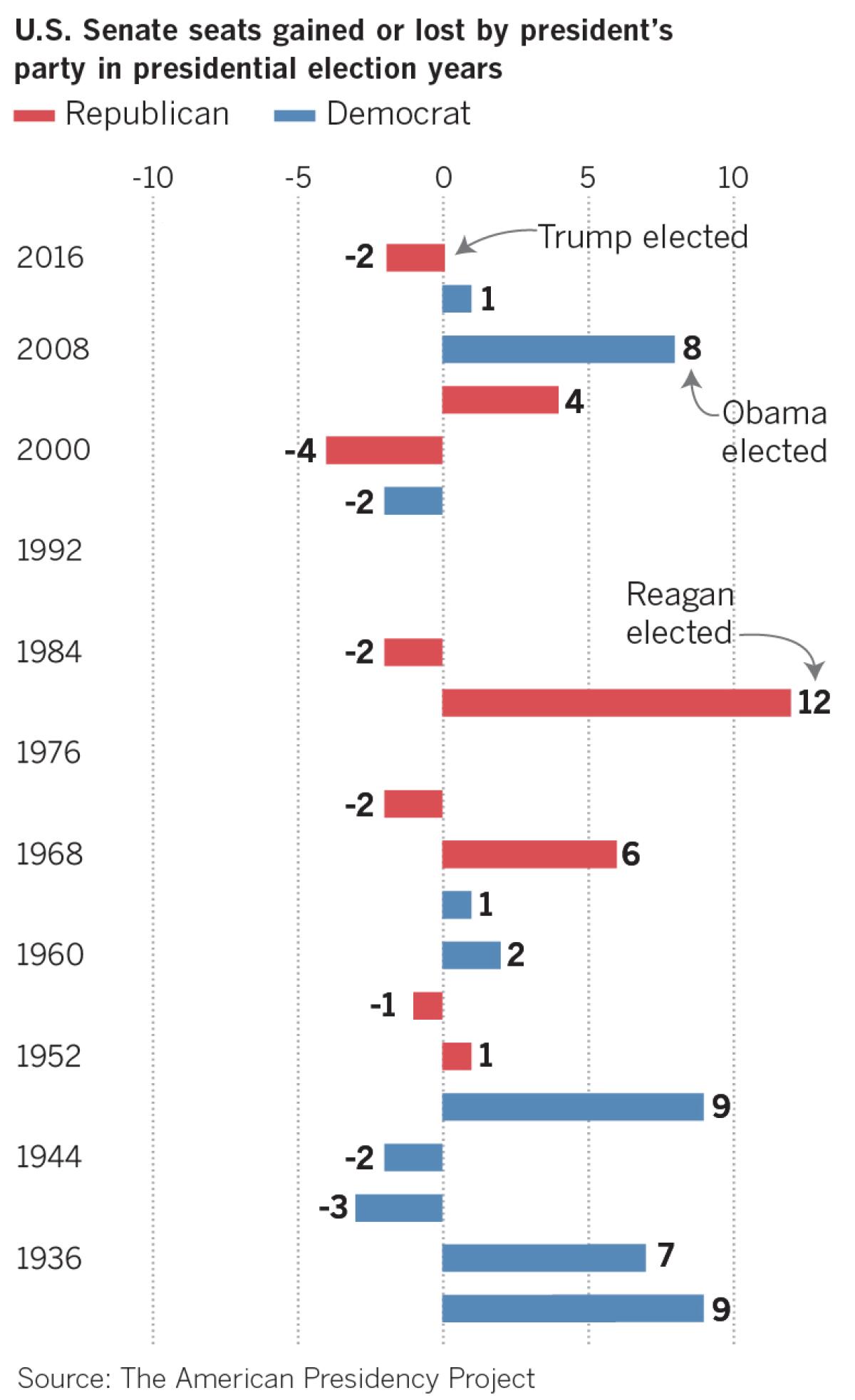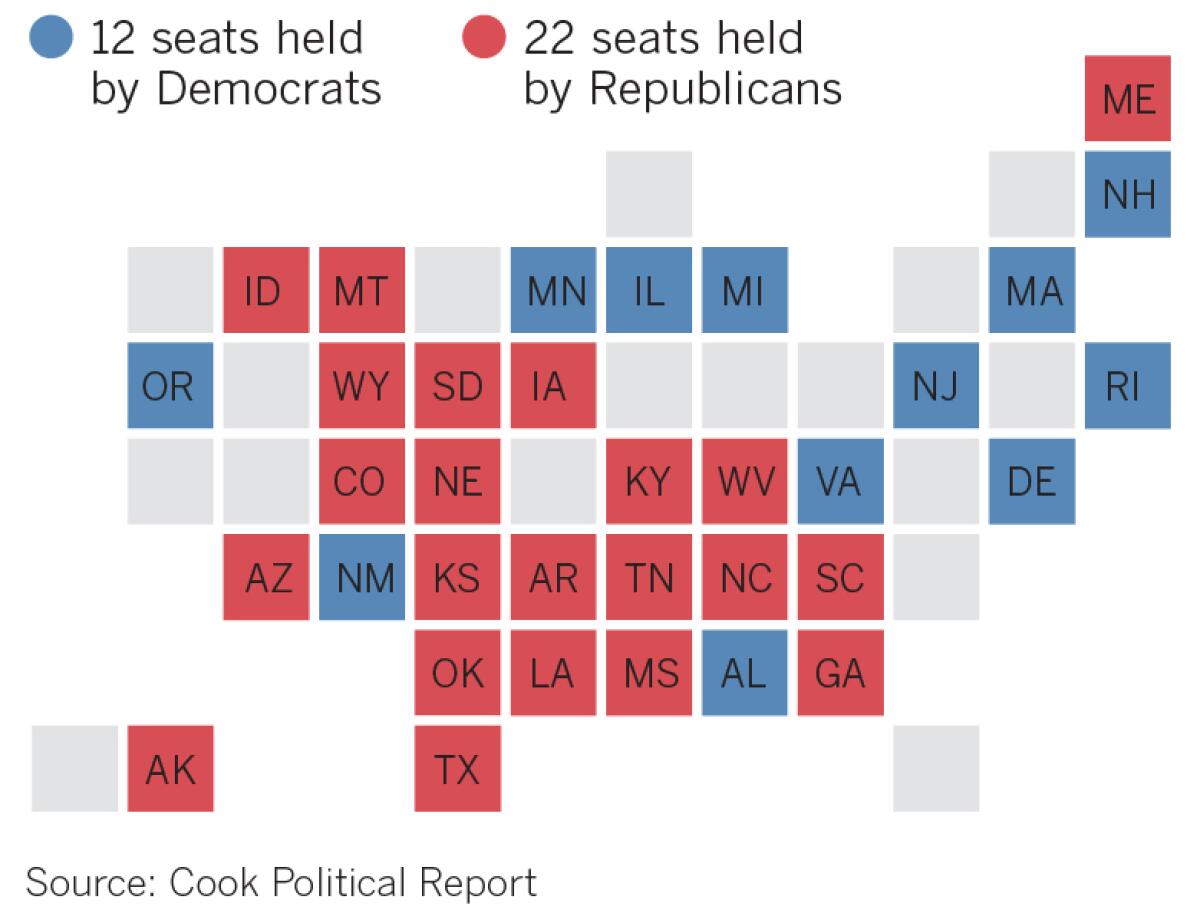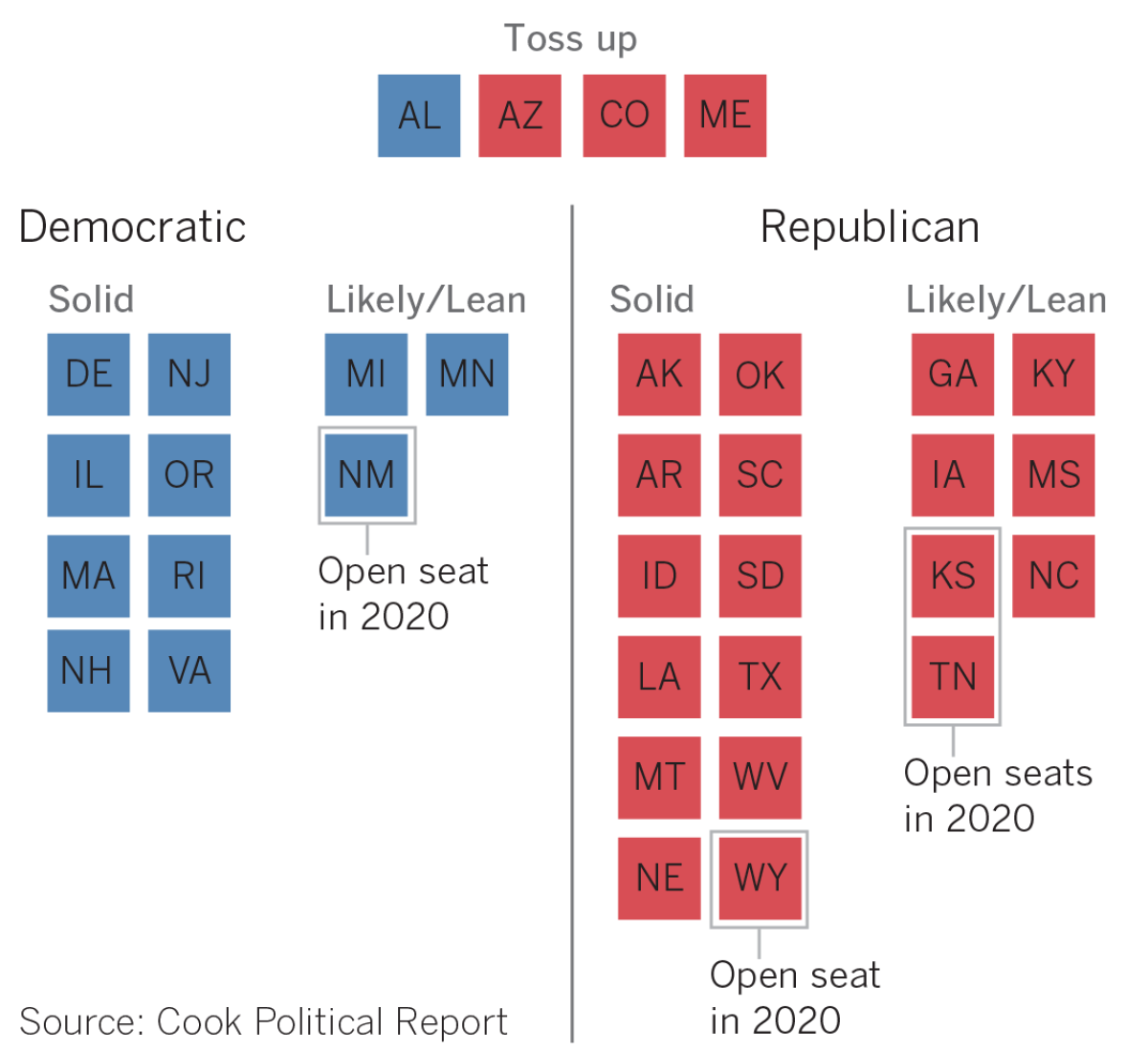Free college? Better healthcare? Democrats need to win the Senate along with the White House

The Democrats running for president are promising the sun, the stars and a full moon to boot.
Elect me, they say, and I’ll deliver high-quality healthcare for all. Affordable college. A tax system that rewards hard work and not just the well-off and well-connected.
And on.
None of those fine-sounding pledges will come to pass, however, if Democrats can’t also win control of the Senate in November 2020.
Even if they maintain their House majority — which seems likely, given a glut of Republican retirements and turnout that helps Democrats in presidential election years — none of those promises can be redeemed without approval by the Senate.
Never mind the devilish legislative details. The chances of pushing such an expansive Democratic agenda through a GOP-run Senate are somewhere between exceedingly slim and ha-ha, you’re joking, right?
Thus for all the attention lavished on the epic fight for the White House, the battle for control of the Senate shouldn’t be overlooked, or treated as some mere election afterthought.
OK, then. So who’s going to win control of the Senate?
Sorry. Not going there.
Too chicken?
Cluck.
Fine.
Here’s what we can say: The current makeup of the 100-member Senate is 53 Republicans, 45 Democrats and two independents, Bernie Sanders of Vermont and Angus King of Maine, who caucus with Democrats.

There are 34 Senate seats up in 2020. Twenty-two are held by Republicans. To take control, Democrats will need a gain of three or four seats.
Three or four? Do you really need to hedge?
Actually, yes. It depends which party wins the White House.

If Democrats defeat President Trump, a net gain of three seats would give them a majority, since the vice president has the power to break ties in the Senate.
If Trump is reelected, Democrats would need a gain of four seats to take control, and then good luck getting him to sign their agenda into law.
So if Republicans are defending 22 of 34 seats, that sounds like advantage Democrats.
Not necessarily. “Recognizing it’s early, I wouldn’t say the majority is really in play,” said Jennifer Duffy, a campaign analyst with the nonpartisan Cook Political Report. “But that doesn’t mean it won’t be by this time next year.”
Huh?
True, it’s definitely a more favorable map for Democrats than 2018, when they were defending 26 of 35 seats, many in states Trump carried by a large margin. That’s why Democratic leaders drew a huge sigh of relief when Republicans managed to gain just two seats in the midterm election.
But of the 22 seats the GOP is defending in 2020, only two are in states — Colorado and Maine — that Hillary Clinton won in 2016.
And it’s not as though Democrats won’t have to defend any of their incumbents.

Do tell.
Arguably the most vulnerable senator in either party is Alabama Democrat Doug Jones, who eked out victory in that staunchly Republican state in a December 2017 special election colored by creepy sexual misconduct allegations against the Republican nominee, Roy Moore.
Moore is running again in 2020, and the GOP establishment is working mightily to thwart his comeback and boost prospects for a Republican pickup, knowing a victory there would make the Democratic road to a Senate majority even steeper.
Are there other endangered Democrats?
Republicans are talking up their chances against freshman Sen. Gary Peters in Michigan, a state Trump narrowly won, and two-term Sen. Jeanne Shaheen of New Hampshire, a state Trump barely lost. But neither appears remotely as vulnerable as Jones, who represents a state Trump carried by nearly 30 percentage points.
How about targeted Republicans?
Colorado freshman Cory Gardner tops the list. He’s been a Trump loyalist in a state that has grown increasingly Democratic over the last decade or so.
There’s also Martha McSally. She narrowly lost a 2018 Senate race in Arizona, in good part because she was seen as too close to Trump in a state he barely won. McSally is on the ballot again in 2020 after being appointed to replace the late John McCain. Arizona figures to be a top presidential and Senate battleground.
Democrats’ other main target is Susan Collins of Maine, who cast high-profile votes in favor of Trump’s tax-cut bill and Supreme Court nominee Brett Kavanaugh. Money has poured in from activists around the country in a bid to flip the seat, which Collins has held for more than two decades.
Any other Republicans in danger?
Democrats have a wish list that also includes Iowa, Georgia and North Carolina, where a trio of freshman lawmakers — Joni Ernst, David Perdue and Thom Tillis, respectively — appear relatively safe, unless a Democratic wave emerges in 2020.

Any surprises?
Well, if we discussed them here, they wouldn’t be surprising, would they?
True.
It bears repeating that’s it still very early. Some races that seem competitive could fall off the map. Others may take unexpected turns.
“At this point six years ago, Ernst was barely mentioned in articles on the Senate race,” noted Nathan Gonzales, publisher of Inside Elections, a nonpartisan campaign newsletter. Ernst ended up winning handily, becoming the first women elected to Congress in Iowa history.
Aren’t there Democrats running for president who would make better Senate candidates?
Presumably you speak of Montana Gov. Steve Bullock and former Texas Rep. Beto O’Rourke?
Indeed.
Bullock and O’Rourke have both been adamant they have no desire to run for Senate, even though O’Rourke put a serious scare in Texas Republican Ted Cruz in 2016.
Former Colorado Gov. John Hickenlooper, however, is considering running for Senate now that he’s withdrawn as a presidential contender.
Each has time to make up his mind. The filing deadline in Texas is Dec. 9. In Montana and Colorado, it’s not until March.
Wouldn’t they all serve the Democratic Party better by dropping out and running for Senate?
That’s for those candidates to decide. If you feel strongly, maybe you should run.
Hey, I’m just a kibitzer.
Hmm. I thought that was my job.
More to Read
Get the L.A. Times Politics newsletter
Deeply reported insights into legislation, politics and policy from Sacramento, Washington and beyond. In your inbox three times per week.
You may occasionally receive promotional content from the Los Angeles Times.











